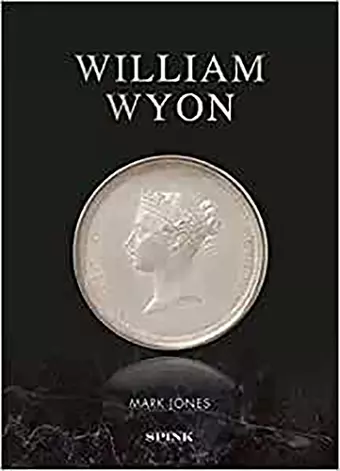William Wyon
Format:Hardback
Publisher:Spink & Son Ltd
Published:28th Feb '25
Should be back in stock very soon

Chief Engraver at the Royal Mint and the leading medallist of his time William Wyon RA (1795-1851) produced some of the best known and most widely distributed images ever made. His portraits of the young Queen Victoria on the coinage, used throughout the British empire, and the more regal head used for the first postage stamps, the penny red and twopenny blue, were reproduced in their millions and distributed all around the globe. A highly regarded modeller in low relief, known and admired for the classical purity of his compositions and the accomplishment of their execution, Wyon was celebrated as a British artist who more than rivalled his continental competitors, favoured by royalty and by many of the most prominent and influential figures of his time. The book aims to understand how and why Wyon's work was commissioned and how it was received, using institutional archives, contemporary correspondence and reminiscence, and the popular press, to create a rounded picture of the life, work, networks, influence and impact of an artist who was also an entrepreneur on his own account and a public servant at the heart of the establishment. Wyon's career began with a major contribution to the execution of the monetary reform that created a new and widely respected coinage which underpinned and symbolised the global growth of the British economy. The medals, which he made throughout his career, reflect their time: commissioned to celebrate and reward the scientific and technological progress, the improvements in education and agriculture, the literary and artistic achievements, the passion for making things better and recognising and encouraging those who did, that characterised Wyon's contemporaries. Almost every major figure of the age is here, from Prince Albert and Queen Victoria, to Palmerston, Peel, Wellington and Gladstone; from Maria II of Portugal and Mrs Sweetenham Waters to Sir Joseph Banks, Sir Walter Scott, Sir John Soane and Thomas Telford. And yet the prosperity that enabled his patrons to commission Wyon's work, often came from the profits derived from the long hours and appalling conditions of industrialising Britain, from enslaved labour in the West Indies and from imperial aggression in India and the Far East. Late in his career it was Wyon who was commissioned to create the military and naval...
ISBN: 9781912667796
Dimensions: unknown
Weight: unknown
400 pages